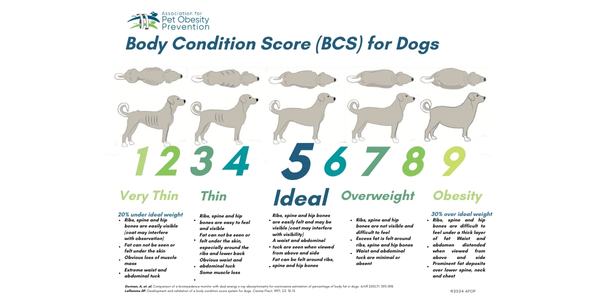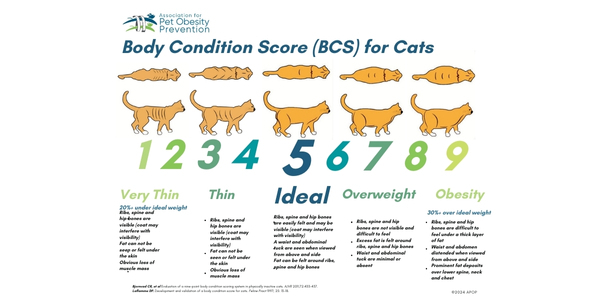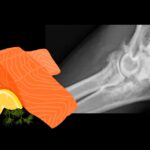They tell us that dietary restriction, leading to a lean body condition, can increase lifespan and delay the onset of many degenerative conditions that cause poor quality of life and chronic pain.
In a simple but elegant study, Nestle Purina followed 48 Labs from 8 weeks of age until the last one died 14 years later. Half of them were a lean or ideal body condition, and ate 25% less than the others.
The lean dogs lived on average 15% longer, which amounted to almost two years longer for these labs. They also developed degenerative conditions, like arthritis, later in life compared to the non-restricted dogs.

This was the first dietary restriction lifespan study on a large mammal. The implications for our pets is huge, but there is also a broader message we can take from this.
To compare, if we could extrapolate to humans, adding 15% of lifespan could add 12 years of life to people with an expected lifespan of 80 years.
So, how can we use this information to keep our pets with us longer?
Step 1. Check Your Pet’s Body Condition Score
- Body condition scoring is a simple assessment of whether a pet is thin, ideal, or overweight.
- The goal is to add objective criteria to a pet’s physical evaluation, keeping vets and owners on the same page.
- Each point above 5 (ideal) on the 9-point Body Condition Score (BCS) scale in cats and dogs represents an approximate 10-15% increase in body fat.
How to check BCS:
- Feel the Ribs: You should feel the ribs of a pet with ideal BCS easily, but not see every rib from across the room. It should feel like your pet is wearing a T-shirt, not a sweater!
- Tummy Check: look at your pet from above and from the side. The tummy should tuck in (indentation) from above and the side, before the hips.

Have a look at the BCS charts and see if you can determine your pet’s body condition score. Compare notes with your veterinarian! 9 Point BCS Chart for Dogs9 Point BCS Chart for Cats


Step 2. Determine if Any Changes Are Needed
Okay, we have a score, so now what?
Well, that depends.
Low BCS:
A consultation with a vet to determine why your pet is thinner than ideal is a great first step. There are medical conditions that can lead to weight loss, or failure to achieve an ideal BCS.
Some healthy dogs are very active and seem to have difficulty keeping any weight on. Working dogs, athletes and sporting dogs have different food requirements. So do breeding and lactating females. The vast majority of young German Shepherds that I saw in practice were thin, yet healthy.
Ideal BCS:
Keep up the good work!
Keep going with appropriate diet and exercise. Monitor BCS often. Catch changes early and make the necessary corrections early to prevent big problems. Remember, changes in lifestyle, health, reproductive and metabolic state and medications can affect a pet’s weight.
High BCS:
You’ve got some work to do!
But the work is worth it, because success means your pet has the potential for a longer (and better quality) life!
Nice.
Subscribe to the newsletter, because soon we will explore the weight loss drugs that are the talk of the town in human medicine.
Ozempic or Wegovy for pets? Is it a possibility?




